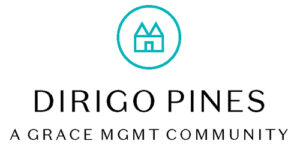Sitkovetsky Trio
The Sitkovetsky Trio has established itself as an exceptional piano trio of today. Their thoughtful and committed approach has brought the ensemble critical acclaim and invitations to renowned concert halls around the world. Recently the Trio received the Chamber Music Award of the BBC Music Magazine. They are first prize-winners of the International Commerzbank Chamber Music Award, recipients of the NORDMETALL Chamber Music Award at the MecklenburgVorpommern Festival, as well as the Philharmonia-Martin Chamber Music Award.
Alexander Sitkovetsky – violin
Wu Qian – piano
Isang Enders – cello
PROGRAM:
The American Dream
Piano Trio No. 2 – Cécile Chaminade (1857-1944)
Café Music – Paul Schoenfield (1947-2024)
Intermission
Piano Trio No. 3 in F minor, Op. 65 – Antonín Dvorák (1841-1904)
Tickets $43, all fees included | K-12 students free with an accompanying adult
PROGRAM NOTES
A note about the program from the Sitkovetsky Trio:
We wanted to create a program that reflects on the excitement and opportunity that brought so many great artists to the United States toward the end of the 19th Century. During this time, classical music was still mostly an European art form, but musicians and composers from the continent had started to visit for concert tours, residencies, teaching and to have their music performed. We know that Dvo?ák had lived and worked in New York and then in Iowa for two and a half years, where some of his most iconic repertoire was written such as the New World Symphony and the American String Quartet. Cécile Chaminade had also left a big mark on the American Music world through her compositions. By the time she finally toured the USA in 1908, she had amassed a significant fan base who performed her music and she came to America as a celebrity, performing at Carnegie Hall twice as part of a two month long tour. When Paul Schoenfield decided to write his “Cafe Music” in the 1980s, he was inspired by a house trio playing in a restaurant in Minneapolis, who were able to play in a variety of different styles. In many ways, his unique blend of Early 20th Century music combined with elements of Jazz, Broadway and of traditional Yiddish folk tunes, represents the true American Experience, at least as seen from abroad: a melting pot of cultures coming together to create a synergy of colors, flavors and different styles of music
Program notes for the Chaminade, and Dvo?ák were written by Dr. Laura Artesani. Notes for the Schoenfield were provided by Sitkovetsky Trio’s management.
Cécile Chaminade: Piano Trio No. 2 in A minor, Op. 34
Cécile Chaminade occupies a unique place in music history, as the first woman to receive international recognition as a composer, and the first woman to receive the Légion d’Honneur in France. Born in Paris, Chaminade demonstrated musical talent at a young age. Her parents refused to let her enroll in the Paris Conservatoire, but they allowed her to study privately with several of the professors from that institution. When Chaminade was 18, the composer Ambrose Thomas heard one of her orchestral works and declared, “This is no woman composer; this is a composer who happens to be a woman.” Chaminade became a concert pianist, and composed over 200 works for the piano, which she performed during her international tours. Her travels brought her to the United States in 1908, and over 200 “Chaminade Clubs” were founded throughout the U.S. as a result of her wildly successful tour, many of which are still operating today. In addition to works for the piano, Chaminade composed the dramatic symphony Les Amazons, a ballet, a comic opera, an orchestral suite, songs, and chamber music.
Chaminade’s Piano Trio No. 2 was written in 1887, when the composer was thirty years old. It is dedicated to the French cellist and teacher Jules Delsart, who performed with Chaminade at the premiere of this work in Paris. The violinist for the premiere is not known. It is a stormy and brooding work that immediately grabs the attention of the listener. The main theme of the dramatic first movement is dominated by fiery, ascending scale passages. The contrasting second theme, introduced by the cello, is also based on an ascending scale motive. The lovely, songlike second movement is reminiscent of works by one of Chaminade’s professors, Benjamin Godard, who taught violin and composition at the Paris Conservatoire. The Allegro energico finale is indeed energetic, filled with tension which builds throughout the main body of the movement and the extensive coda, leading to the breathless and virtuosic conclusion.
Paul Schoenfield: Café Music
About his piece Paul Schoenfield says, “The idea to compose Café Music first came to me in 1985 after sitting in one night for the pianist at Murray’s Restaurant in Minneapolis, Minnesota. Murray’s employs a house trio that plays entertaining dinner music in a wide variety of styles. My intention was to write a kind of high-class dinner music – music which could be played at a restaurant, but might also (just barely) find its way into a concert hall. The work draws on many of the types of music played by the trio at Murray’s. For example, early 20th-century American, Viennese, light classical, gypsy, and Broadway styles are all represented. A paraphrase of a beautiful Chassidic melody is incorporated in the second movement.” Paul Schoenfield Café Music was commissioned by the St. Paul Chamber Orchestra (SPCO) and received its premiere during a SPCO chamber concert in January 1987.
Antonín Dvo?ák: Piano Trio No. 3 in F minor, Op. 65
In 1875, Johannes Brahms served on the jury of the Austrian State Stipendium, a competition that awarded cash prizes to composers within the Habsburg Empire. Of all the entrants, Brahms was most impressed with the works submitted by the 34 year old Antonín Dvo?ák, who was declared the winner that year, and two additional times in the years that followed. Two years later, the two composers began to correspond with each other, and Brahms introduced Dvo?ák to his publisher, Franz Simrock. In 1878, Simrock began publishing some of Dvo?ák’s works, and Dvo?ák composed the piano trio on today’s program at Simrock’s request. Brahms edited some of Dvo?ák’s works, and helped him become established in musical circles by making arrangements for Dvo?ák’s works to be performed. Dvo?ák’s Piano Trio No. 3 in F minor is often referred to as Dvo?ák’s “most Brahmsian” work, due to its overall somberness and breadth. It is often compared to Brahms’s Piano Quintet, Op. 34, composed 19 years earlier. The two works are in the same key, and the mood is similar. In both trios, the piano, violin and cello announce the main theme of the first movement in unison.
On December 15, 1882, Dvo?ák’s mother died, and he was overcome with grief. He began work on this trio six weeks later, on February 4, 1883, and completed it on March 21. It is generally believed that this composition was written by the composer as a reaction to the loss of his mother, with whom he had a very close relationship. The premiere took place on October 27 of the same year, at a concert featuring Dvo?ák’s works in Mladá Boleslav, Bohemia. Dvo?ák played the piano for this occasion, and the violinist was Ferdinand Lachner, a professor at the Prague Conservatory who premiered many of Dvo?ák’s works. The cellist was Alois Neruda, who was also involved in the premieres of many of Dvo?ák’s compositions, and for whom Dvo?ák wrote his Polonaise in A major for cello and piano.
As author and music critic James Keller writes, “The opulence of sound, expression and form in this symphonically conceived work almost transcends chamber music itself.” Written on a grand scale, the trio’s intense opening movement is in sonata form, and filled with “musical question marks”: themes that do not end on the tonic, creating a sense of restlessness. A folklike scherzo follows, in the unexpected key of C sharp minor/D flat major. During the main theme, the violin and cello play triplets against a quarter note + two eighth notes rhythm in the piano, creating a subtly agitated atmosphere. The spacious and transcendent third movement features the cello, which introduces both the main theme and the beautiful second theme. Dvorak often draws on the musical traditions of his native Bohemia in his works, and the finale of this trio is no exception. It contains elements of Bohemian folk dances, but also maintains the serious sense of purpose that dominates this work. The finale concludes with an unexpected, dramatic musical quote from the opening of the first movement, bringing this work to a fulfilling and satisfying conclusion.
– Laura Artesani, D.M.A.
Thank you to our Chamber Music Series sponsor:

and thank you to our Chamber Music reception sponsor:

Reserve a room with our hotel sponsor:

